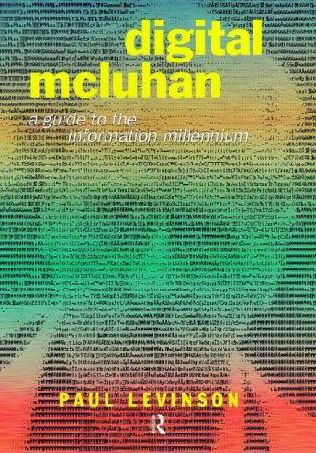Paul Heyer: Harold Innis (2003)
Filed under book | Tags: · critical media studies, history of communications, media, media theory, political economy

His name may not be as well known as that of his colleague and spiritual descendent, Marshall McLuhan, but Harold Innis’s (1894-1952) influence on contemporary critical media and communication studies has been no less profound. This concise look at Innis’s life and contributions to the communication field charts his beginnings in political economy to his later work in critical media studies and communications history, synthesizing his key publications and clearly showing their ongoing resonance for the field today. The book also includes an appendix by William J. Buxton on the “History of Communications” manuscript and one by J. David Black on the contributions of Mary Quayle Innis.
Keywords and phrases
Harold Innis, University of Toronto, monopoly of knowledge, Harold Adams Innis, fur trade, Marshall McLuhan, space-bias, Innis’s, Eric Havelock, History of Communications, Donald Grant Creighton, Canadian Pacific Railway, Alfred Kroeber, political economy, quipu, Thorstein Veblen, communication studies, Ronald Deibert, Peter Pond, David Crowley
Publisher Rowman & Littlefield, 2003
ISBN 0742524841, 9780742524842
Length 133 pages
More info (publisher)
More info (google books)
Marshall McLuhan: Understanding Media: The Extensions of Man (1964–) [EN, SC, CZ, DE, CR]
Filed under book | Tags: · advertising, film, global village, history of technology, mass media, media technology, media theory, money, new media, phonograph, photography, print, radio, technology, telegraphy, telephone, television

“When first published, Marshall McLuhan’s Understanding Media made history with its radical view of the effects of electronic communications upon man and life in the twentieth century. In Terrence Gordon’s own words, “McLuhan is in full flight already in the introduction, challenging us to plunge with him into what he calls ‘the creative process of knowing.'” Much to the chagrin of his contemporary critics McLuhan’s preference was for a prose style that explored rather than explained. Probes, or aphorisms, were an indispensable tool with which he sought to prompt and prod the reader into an “understanding of how media operates” and to provoke reflection.
In the 1960s McLuhan’s theories aroused both wrath and admiration. It is intriguing to speculate what he might have to say 40 years later on subjects to which he devoted whole chapters such as Television, The Telephone, Weapons, Housing and Money. Today few would dispute that mass media have indeed decentralized modern living and turned the world into a global village.”
First published in 1964
With a new introduction by Lewis H. Lapham
Publisher The MIT Press, 1994
ISBN: 0262631598, 9780262631594
392 pages
Understanding Media: The Extensions of Man (English, 1964/1994, updated on 2019-2-27)
Poznavanje opštila: čovekovih produžetaka (Serbo-Croatian, trans. Slobodan Đorđević, 1971, added on 2015-12-21)
Jak rozumět médiím: Extenze člověka (Czech, trans. Miloš Calda, 1991, added on 2014-3-13)
Die magischen Kanäle: Understanding Media (German, trans. Meinrad Amann, 1992, added on 2013-11-22)
Razumijevanje medija (Croatian, trans. David Prpa, 2008, added on 2013-11-22)
Paul Levinson: Digital McLuhan: A Guide to the Information Millennium (1999)
Filed under book | Tags: · computing, global village, internet, mass media, media, media theory

“Marshall McLuhan died on the last day of 1980, on the doorstep of the personal computer revolution. Yet McLuhan’s ideas, developed in the 1950s, ’60s and ’70s, presaged a world of media in motion, and its impact on our lives on the dawn of the new millennium. McLuhan’s phrase, “the medium is the message” is his best known and most misunderstood concept. Paul Levinson presents the accuracy of McLuhan’s thinking unavailable while he was alive, and shows him as a man struggling to communicate in an electronic pattern via the straightjacket of paper. Levinson also examines why McLuhan’s theories about media are more important to us today than when they were first written, and why the Wired generation is now turning to McLuhan’s work to understand the global village in the digital age. By exploring the technological influence in industries from publishing to politics, entertainment to business, McLuhan opened the doors for understanding the human relationship with technology. Levinson’s own exploration of McLuhan’s significance in the new electronic generation clarifies the prophetic insights, principles and constructs in McLuhan’s work.”
Publisher Routledge, 1999
ISBN 041519251X, 9780415192514
226 pages
Keywords and phrases: personal computer, theremin, rear-view mirror, Marshall McLuhan, tetrad, Connected Education, Neil Postman, RealAudio, mass media, CP/M, Communications Decency Act, global village, Media Ecology, Internet, Gutenberg Galaxy, Paul Levinson, voyeurs, Eric McLuhan, Kaypro, RealVideo.
PDF (updated on 2022-11-12)
Comments (4)
